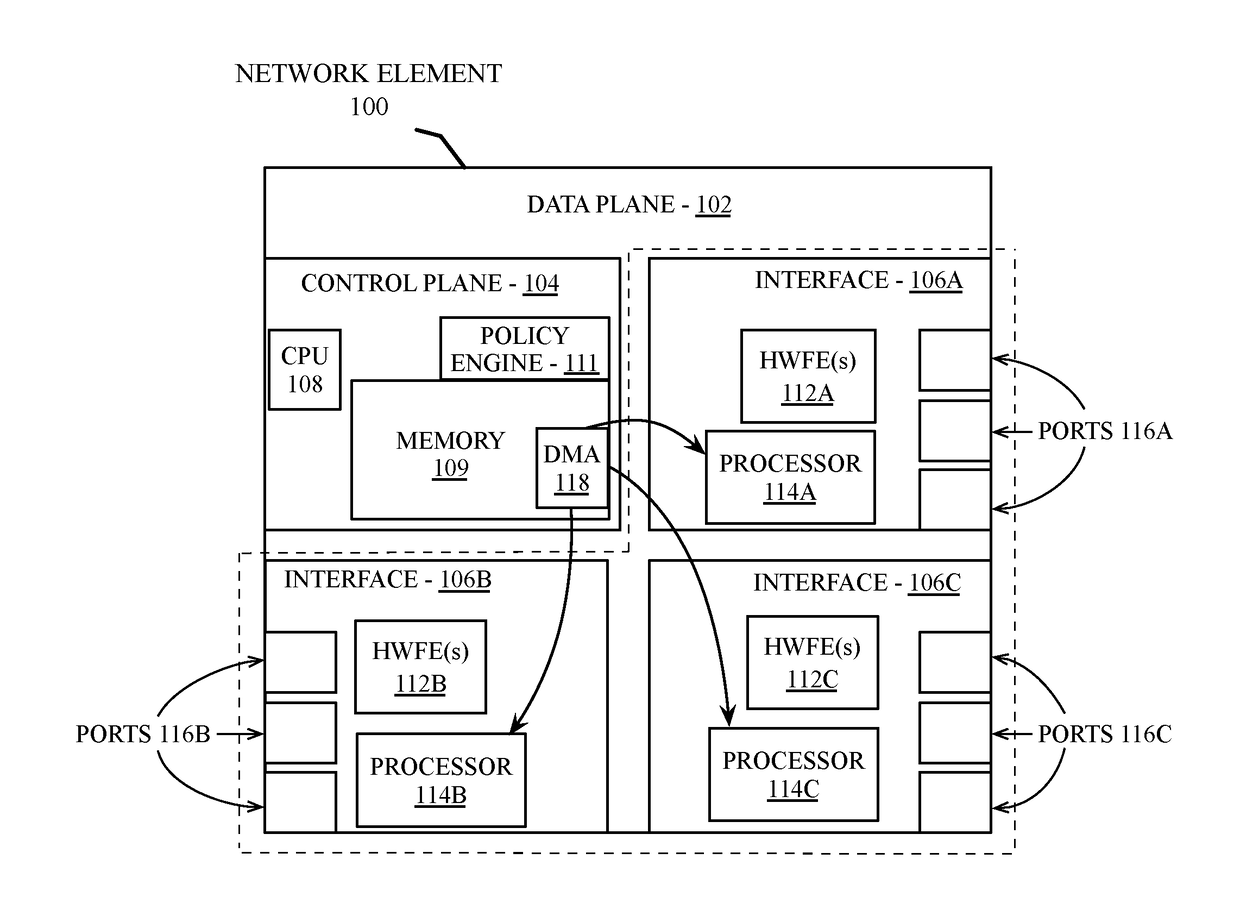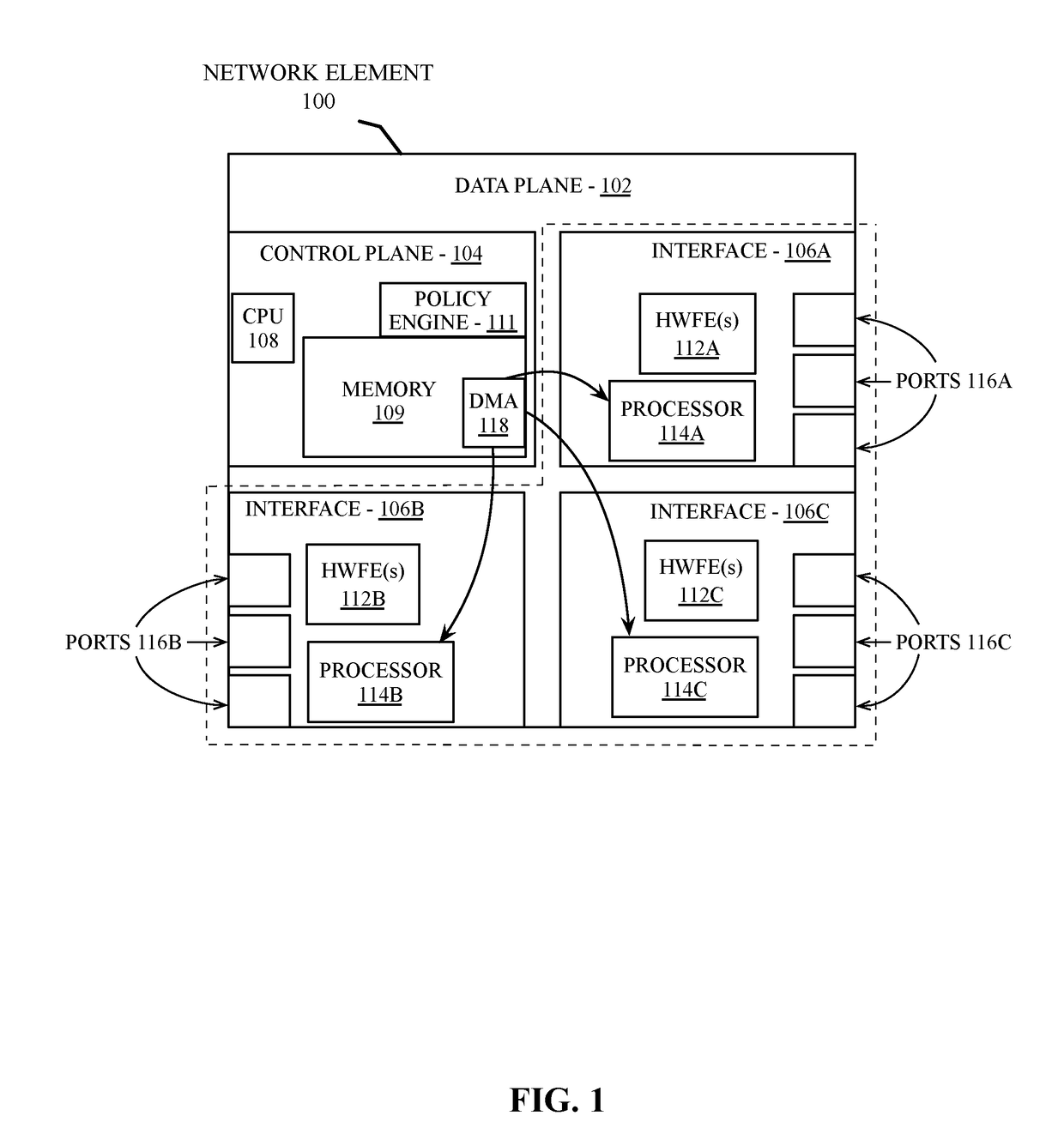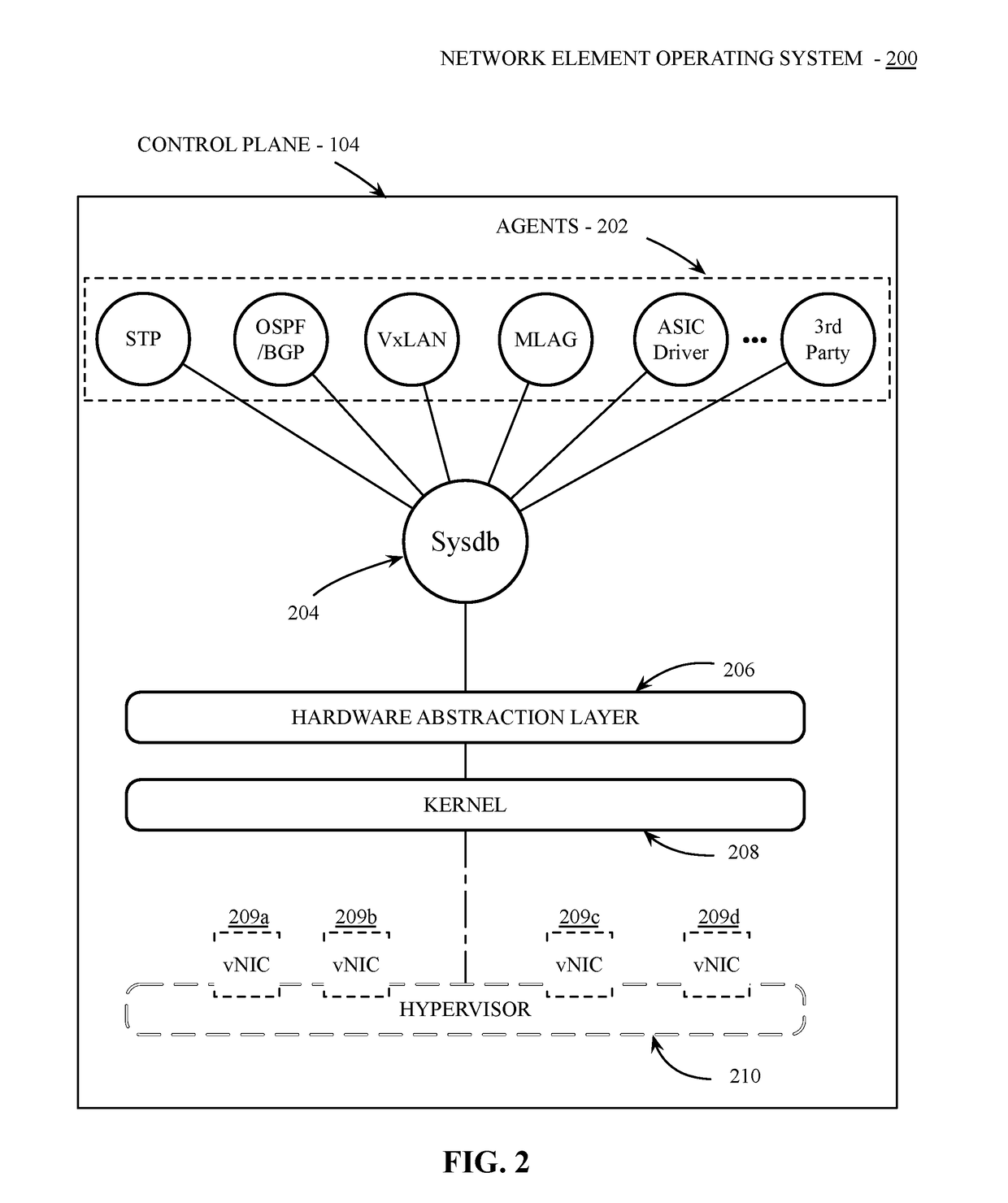Link aggregation split-brain detection and recovery
a split-brain detection and link technology, applied in the field of data networking, can solve the problems of increasing the latency of network data propagation through the network nodes, and the implementations known in the art are generally unable to distinguish between a node failure and a communication failure between the various nodes of a multi-chassis lag configuration
- Summary
- Abstract
- Description
- Claims
- Application Information
AI Technical Summary
Benefits of technology
Problems solved by technology
Method used
Image
Examples
Embodiment Construction
[0023]Embodiments described herein provide a multi-chassis LAG (MLAG) mechanism that enables an active-active link aggregation control protocol (LACP) connection to two or more network elements. In one embodiment, the MLAG mechanism includes logic to distinguish between a link failure and a node failure within the MLAG to detect and recover from a multi-chassis split-brain scenario. A split-brain scenario occurs when communication is lost between the network element nodes within a multi-chassis LAG and each node continues to operate as though the other node(s) in the LAG have failed. In some scenarios this can lead to network congestion or network errors due to forwarding loops.
[0024]To detect and recover from a split-brain scenario, network elements in an MLAG configuration can determine peer status via a network management system in communication with network elements within the network system. In one embodiment, an in-band network API is provided by the network management system ...
PUM
 Login to View More
Login to View More Abstract
Description
Claims
Application Information
 Login to View More
Login to View More - R&D
- Intellectual Property
- Life Sciences
- Materials
- Tech Scout
- Unparalleled Data Quality
- Higher Quality Content
- 60% Fewer Hallucinations
Browse by: Latest US Patents, China's latest patents, Technical Efficacy Thesaurus, Application Domain, Technology Topic, Popular Technical Reports.
© 2025 PatSnap. All rights reserved.Legal|Privacy policy|Modern Slavery Act Transparency Statement|Sitemap|About US| Contact US: help@patsnap.com



